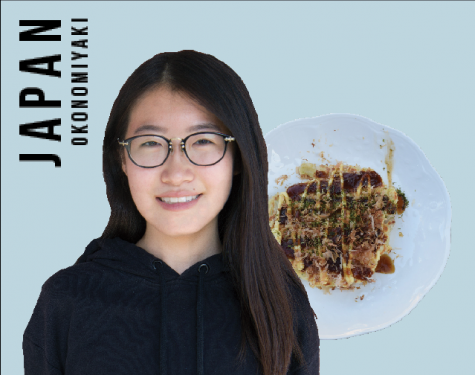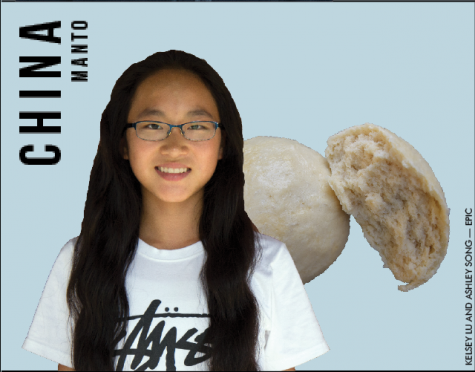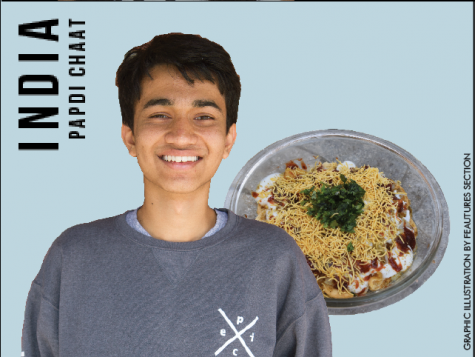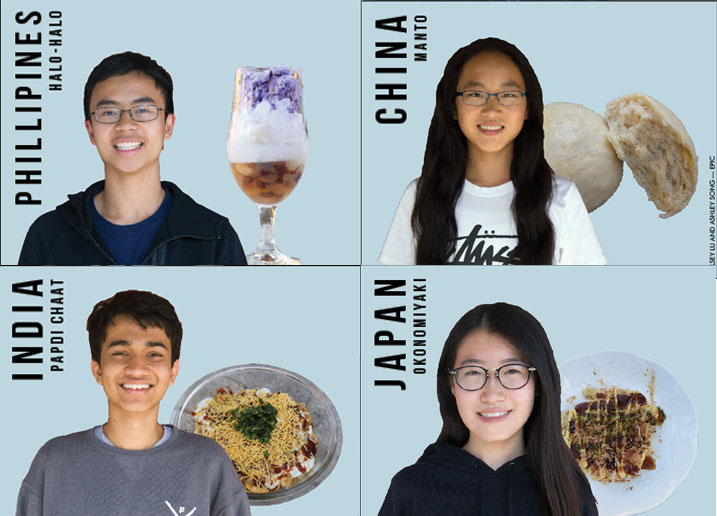Mixing it up: Epic explores cultures
October 5, 2018
Food brings people together, but it is also what sets each group apart through different cooking methods and ingredients. In this challenge, four Epic staffers create a traditional dish from their respective cultures for each other to taste.

Risa:
Growing up, I had always enjoyed the “okonomiyaki” that my dad made, so I thought: what could go wrong? It’s cheap, fast, delicious and never disappoints. This delicious, savory, pancake-style dish involves flour, eggs, shredded cabbage, meat and shrimp grilled on a pan, topped with otafuku sauce, Japanese mayonnaise, seaweed flakes and bonito flakes. As I was preparing the ingredients the day before, I envisioned myself gracefully flipping the “okonomiyaki” with ease — much like my dad or the street vendors of Osaka — but I had not accounted for my extreme lack of experience with making the dish, or cooking in general. The batter looked clumpy, as I had added too much cabbage, and I lost count of the number of times the others sent doubtful looks and comments my way, especially because of the way I was grilling the “okonomiyaki” on a crepe-maker. So awful were my abilities, apparently, that Sunny took over for me by the end. There truly cannot be a way to screw up with “okonomiyaki,” however; as the savory taste of the toppings outweighed everything else, the end product was delectable.
After finishing my dish, I finally had the chance to try what Enzo, Sunny and Pranav prepared. While I was familiar with some dishes, Enzo’s “halo-halo” was new to me, and as someone with a sweet tooth, it might be the favorite dish I tried in this challenge. The recipe was very simple, yet the dessert still had a good balance of different flavors.
After trying out these different foods, I realized how uncultured I am, but I guess that was the point of this challenge: to appreciate the different aspects of each culture that are not known outside of their community. Trying dishes from other countries made me rethink the type of foods I take for granted, and how the food I have grown up eating has influenced my taste to favor specific flavors. This challenge has reminded to me to be more open-minded toward other cultures, so it goes without saying that my newest addition to my weekend plans will include going out to a restaurant of another culture — though I might start with supplying myself with another serving of that “halo-halo” to fulfill my cravings.

Enzo:
Few people are aware that I am Filipino. The amount of Filipino students at Lynbrook is scarce, and for this reason, I signed up for the challenge because I knew I could share a dish that probably no one has tried before. I decided to make “halo-halo,” a traditional Filipino dessert that literally translates to “mix-mix.” I chose to make this dish because of its simplicity. “Halo-halo” is made of preserved mixed fruit followed by layers of ice and ice cream and topped with evaporated milk. The Philippines is a tropical country right on the equator, which is why most of our desserts are frozen: to offer relief from the sweltering humidity.
Since the preparation of my dish only involved combining the ingredients into a glass, I figured it would take about five minutes to make one serving. Sadly , I forgot to take into account that I had to crush ice, which took about 15 minutes. Initially, I tried using Sunny’s Vitamix to crush the ice, but the blades spun so fast that the heat started turning the ice into water. I ended up manually grinding the ice with a mortar and pestle, but even that did not produce as fine ice shavings as I would have liked. I could tell the others were annoyed at having to chew the chunky ice balls, but the rest of the preparation went as smoothly as I had hoped. I successfully scooped the fruit preserves and ice cream into the glass, and drizzled condensed milk over the top. The final result actually looked appetizing. All the hard work I spent mixing ingredients had made me hungry, so I was eager to taste the other dishes. Risa’s “okonomiyaki” was probably my favorite. It was a crispy and savory pancake-like dish made of meat wrapped in cabbage batter. I assumed that I would not enjoy the taste of fried cabbage, but one bite of the okonomiyaki changed my mind. The fried batter tasted light and the meat was perfectly cooked. The dried fish flakes added to the crispy texture, and the sauce drizzled on top added a creamy flavor.
This challenge was not only fun and tasty, but it also reminded me of the diversity of the staff. More than making and eating the food, I appreciated the opportunity to get to know my fellow staffers and had a memorable experience laughing about our questionable culinary skills.

Sunny:
My mom and grandpa always made “manto,” a white bread-like steamed bun, and I loved eating it toasted for breakfast even weeks afterward. “Manto” is the plain form of steamed buns, which can have sweet or savory filling inside. It is soft and doughy, but not as airy as bread. I thought that his challenge would be a great opportunity to finally make this classic dish for myself and share it. Initially, it seemed like there was too much water in my dough, but I just needed to keep on kneading for a little longer so it would come together. The rest of the process went smoothly, including shaping the dough, resting and steaming the buns.
While making my dish, I had to chance to watch and help other staffers cook. We all ran into difficulties because we had no prior experience making the dishes: Pranav dropped his dough, Risa added too much cabbage and Enzo could not crush ice. Luckily in the end, it all turned out to be fine because the food was good even with the imperfections.
Because I had not tried any of the other foods before, this challenge made me realize that I need to branch out more. In particular, Pranav’s “chaat” was especially different from my usual diet. It was an explosion of salty and spicy flavors and of crunchy and soft textures. The different elements of his dish, such as the tamarind chutney, yogurt, chickpeas and deep-fried crisps, were not mixed evenly, which added to the element of surprise. Each bite was different.
Through the challenge, I was able to try foods of different cultures, but more importantly, I realized that the end result does not have to be perfect, because the experience of making and sharing food is most valuable.

Pranav:
Having lived in India for most of my life, I have always felt a strong connection to my native culture and still follow its many customs and traditions. Perhaps the most prominent aspect of Indian culture is the culinary diversity it encompasses. For this reason, it was really hard choosing a single dish to represent Indian cuisine, but eventually I decided on making “papdi chaat.” I felt that this popular street-food-style snack was a reflection of Indian lifestyle in many ways — colorful, chaotic and rich with texture and flavor. During this challenge, I realized that making this seemingly complex dish was much more straightforward than I had anticipated, but also much more messy.!
Additionally, I was lucky enough to learn about other cultures from the food of my fellow staffers. Sunny’s “manto,” in particular, stood out to me for its rich balance between taste and simplicity. Watching the meticulous process of folding, baking and steaming the dough was fascinating, but what really stood out was the flavor of the dish. Warm, doughy and comforting, “manto” was the kind of food that made you feel fuzzy inside.
By trying new delicacies from foreign cultures, I exposed my palate to a variety of new flavors, and, at the same time, connected the familiar ones to my own culture. But most importantly, struggling to cook with my less-than-adept fellow staffers was a really rewarding experience, because with the struggle, we learned that the pain and love that goes into a plate of food is what makes it taste great, no matter what culture it represents.






































































